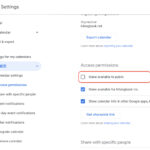In the realm of software development, efficiency and speed are paramount. This is where Continuous Integration (CI) servers come into play, acting as a central hub to automate and streamline the software development lifecycle. When changes are made to the codebase and a pipeline is triggered, it’s the CI server that takes the reins, orchestrating build and test tasks to ensure code quality and faster release cycles.
Typically, to handle the computational demands of building and testing, CI servers delegate these tasks to dedicated machines known as “build agents.” These agents are the workhorses, diligently executing builds and running tests based on the instructions provided by the CI server. This division of labor ensures that the CI server itself doesn’t become overloaded, especially with large and complex projects.
While offloading tasks to build agents is common practice, another option exists: running build and test tasks directly on the CI server. However, for projects with substantial codebases and frequent changes, this approach can lead to resource contention and performance bottlenecks. Therefore, utilizing separate build agents is often the preferred method for maintaining optimal performance.
The power of a CI server lies in its configurability. It allows development teams to define the logic for each stage of their pipeline with granular control. For instance, teams can customize test execution based on the type of branch, running comprehensive test suites on main branches while opting for a reduced set of checks on feature branches to accelerate feedback loops. CI servers also enable control over resource usage, such as limiting concurrent access to test databases, and manage deployment schedules, like restricting staging deployments to specific intervals for thorough manual testing.
Furthermore, CI servers significantly enhance pipeline efficiency through parallel task execution. By distributing tasks across multiple build agents, teams can simultaneously run tests on different operating systems or accelerate testing for massive codebases with hundreds of thousands of tests. In such cases, techniques like composite builds can be employed to aggregate results from parallel tasks, presenting them as a unified build step.
Modern CI servers often integrate seamlessly with cloud infrastructure providers like AWS, unlocking the benefits of elastic and scalable resources. This integration allows teams to dynamically adjust their build and test capacity based on demand. For organizations with extensive infrastructure needs, support for containerized build agents and platforms like Kubernetes provides efficient management of build resources, whether they are hosted in the cloud or on-premises.
In essence, a CI server is the intelligent engine driving continuous integration practices. It automates crucial steps in the software development process, from building and testing to deployment, ultimately fostering faster delivery cycles, improved code quality, and enhanced collaboration within development teams.

